




If the summaries provided in this issue inspire you to re-watch any of the sessions, your attendee link can still be used through December of this year to access the meeting sessions on-demand. If you missed the meeting entirely, you can purchase full on-demand access to the meeting content and view at your own leisure! Visit our meeting website to purchase your on-demand access today!
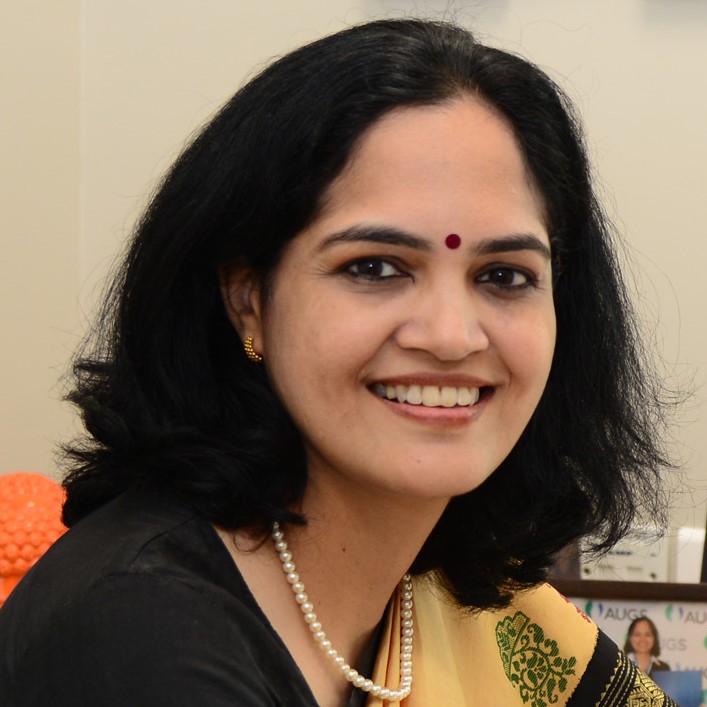
The joint introductory talk by IUGA President, Dr. Jorge Haddad and AUGS President, Dr. Elizabeth Mueller, reflected the longstanding collaborative spirit between IUGA and AUGS. They welcomed the over 1200 attendees from 54 countries who were attending the conference, in person and virtually, to Austin, TX and the 3rd joint meeting of AUGS and IUGA. Dr. Haddad began by thanking the Program Committee, Abstract Committee, and Workshop Committee for putting together an exceptional program with over 29 pre-conference workshops and sessions, specialized education programs including four surgical tutorials and scientific sessions (over 300 oral presentations, salons, and video presentations and over 200 non-discussed posters) that the participants could access depending on their individual interests.
In his IUGA Presidential Address, Dr. Haddad highlighted several IUGA activities that illuminate IUGA’s mission to promote women’s health and the three pillars to accomplish IUGA’s goals:
Dr. Haddad thanked the IUGA Board and the International Advisory Board for their exemplary work. He dwelled on the incredible role played by the various committees, SIGs, FIUGA, and the IUGA Office manned by Status Plus, in providing inspiring leadership during these trying times. He finally thanked his family for their unwavering support through his presidency.

The award for Best Overall Abstract was bestowed on Transvaginal Mesh-Related Complications (MRCs) and The Potential Role of Bacterial Colonization by Diedrich, Verhorstert, Zaat, Roovers. The aim of this observational and explorative study conducted at a tertiary referral center in Amsterdam was to investigate the potential role of transvaginal mesh bacterial colonization in development of MRCs. The study group included 49 women with partial or complete transvaginal mesh or sling revision surgery and the control group included 20 women undergoing elective prolapse surgery. A high number of culture positive mesh-tissue complexes (90%) were found in women suffering from MRCs. Patients with signs of infection or mesh exposure had significantly higher bacterial counts. There was increased species diversity, gram-negative bacteria and polymicrobial cultures were seen in samples from the study group as opposed to the reference cohort. Bacteria was seen in 57% of patients at the mesh-tissue interface on histology and FISH showed evidence of a polymicrobial biofilm in the study cohort. These findings may suggest the need to incorporate solutions to frustrate initial bacterial adhesion (e.g., using mesh-coatings) and support use of delayed resorbable implants.
The Basic Science Abstract Prize was awarded to Atomic Force Microscopy Evaluation of Cellular Mechanical Changes in Adipose Mesenchymal Stem Cell Induced Fibroblast by Jia, Sun, Wang. The purpose of the study was to investigate the changes of cell adhesion and stiffness between adipose-derived mesenchymal stem cells and fibroblasts induced by growth factors. The authors extracted fat from rats for primary culture of adipose-derived mesenchymal stem cells. The third generation of adipose-derived mesenchymal stem cells were cultured by growth factor bFGF and EGF to induce transformation into fibroblasts. Cell adhesion and stiffness were detected and compared with atomic force microscope. The average Young’s modulus of the nuclear region was lower than that of the cytoplasm region, indicating that the stiffness of nuclear region was larger. The mean value of adhesion in the nuclear region was greater than that in the cytoplasm. The average adhesion force of fibroblasts was larger than that of adipose-derived mesenchymal stem cells and the average Young’s modulus of fibroblasts was smaller than that of adipose-derived mesenchymal stem cells, indicating greater cell stiffness. In conclusion, growth factors can adjust cell mechanics by influencing inner microenvironment. With the action of growth factors, the stiffness of fibroblasts is significantly increased, indicating that it is less prone to deformation, which may enhance the mechanical properties of tissues.
The Late Breaking Abstract Award was won by Standard Restrictions versus Expedited Activity After Pelvic Organ Prolapse Surgery: A Randomized Non-inferiority Trial by O’Shea, Truong, Erkanli, Siddiqui, Barber. 123 patients with stage II or greater prolapse undergoing apical reconstruction in ≥ 7 days, who responded ‘no’ to two questions (do you have difficulty walking 2 to 3 blocks or do you have difficulty walking up 10 stairs?) and willing for follow up in 3 months, were included in the study. The patients were randomized to the standard group (lifting < 10 lbs, avoiding vacuuming, sweeping, and mopping for 6 weeks and return to active lifestyle only after 6 weeks) and expedited group (advised to return to activities as soon as they could after surgery and return to work whenever able). Two primary outcomes were chosen: anatomic (maximum support loss or SLmax with a non-inferiority margin of 1 cm) and symptomatic (POPDI with a non-inferiority margin of 34.3 points). Secondary outcomes included accelerometer-based recovery time and number of days it took to return to work. Patients who received expedited activity instructions experienced noninferior anatomic and symptomatic outcomes. Accelerometer recovery time was not significantly different between the two groups. It is reasonable to instruct patients to resume activities ad lib while reassuring patients this will not result in worse outcomes.
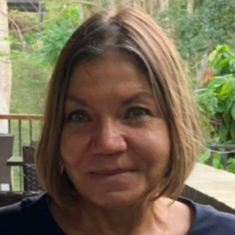
Moderator: Nazema Siddiqui
Speaker: Frank Willem Jansen
Because trans-Atlantic air travel is the third highest contributor to carbon dioxide emissions, Dr. Jansen, in alignment with his subject matter, elected to present remotely.
Global health care, aimed at improving human life, is the world’s 5th largest carbon dioxide emitter. Hospitals produce 7-10% of carbon dioxide emissions (20-30% of this coming from the operating room). As a significant contributor to climate crisis, health care is biting its own tail. Awareness is the first step.

The main sources are:
Suggestions for improvement include increasing the use of propofol IV, decreasing laminar flow, and considering vaginal rather than robotic hysterectomy. As urogynecologists we can:
“Can we do this? Yes. Should we do it? We must.”

Moderators: Dudley Robinson, Nazema Siddiqui
Speakers: Lauren Siff
Dr. Lauren Siff and her colleagues were presented with the award for Best Video Abstract this year at AUGS/IUGA 2022. Their video presentation, Virtual Reality Training Model for Retropubic Sling Surgery, chronicles the development of a virtual reality model to simulate trocar passage for a retropubic mid-urethral sling. MRI and CT images were used to create the volume image with pertinent neurovascular anatomy added. Artificial intelligence algorithms and haptics were added to make the passage of the stylus seem realistic and feel similar to trocar passage. If the passage leads to injury of structures based on the trajectory of the passes, this is shown in the VR model. Their team plans to continue working to further improve the model. This type of simulation is novel and will be tremendously helpful for training as it “unblinds” the passage of the sling trocar.

Moderator: Jorge Milhem Haddad
Speaker: Abdul Sultan
IUGA bestowed the honor of delivering the prestigious annual Ulf Ulmsten Lecture this year on Dr. Abdul Sultan. He was chosen based on his tremendous contributions to the field of urogynecology, IUGA, and his many patients over the years. He presented a captivating talk focusing on the importance of education in identification, management, and most importantly, prevention of OASIs. He shared stories that captured the degrading nature of these injuries and subsequent fecal incontinence. He has worked diligently with IUGA to create the PROTECT program with the goal of training practitioners globally in how best to minimize and manage these injuries. While he presented the topic with the gravitas it is due, the audience was treated to Dr. Sultan’s wonderful sense of humor along the way. It was a talk that will stay with those who viewed it.

Moderators: Jan Deprest, Megan Schimpf
Speakers: David Rahn, David Sheyn
Dr. David Rahn and colleagues were awarded the Best Clinical Non-Surgical Abstract prize for their work on Randomized Clinical Trial of Perioperative Vaginal Estrogen vs. Placebo as Adjuvant Therapy to Native Tissue Vaginal Apical Prolapse Repair. They sought to determine whether perioperative use of vaginal estrogen plays a role in 1-year surgical outcomes. Intent to treat outcomes revealed no difference in failure rates between vaginal estrogen and placebo groups at 1 year, although per protocol results showed more failures in the vaginal estrogen group. This is an ongoing study, and 36-month data will be published when available.
Dr. David Sheyn and colleagues were presented with the Best Epidemiology Abstract award for their abstract titled, The Impact of Dietary Choline Intake on the Development of Urinary Urgency Incontinence. With the knowledge that the acetylcholine pathway is a factor in the pathophysiology of urgency urinary incontinence (UUI), the team analyzed dietary intake of choline and risk of incident UUI using data from the Nurses’ Health Studies 1 and 2. There does appear to be an association between choline intake and development of UUI although further studies are needed.

Moderator: Linda Cardozo
Speakers: Anna-Maija Itkonen Freitas, Dudley Robinson, Javier Pizarro-Berdichevsky, Charles Nager, Vincent Lucente
The panel debates are always a highlight of the Annual Meeting and this year’s Balloon Debate was no exception! While Dr. Charles Nager (USA) won the day with his compelling argument that the mid-urethral sling is the best surgical treatment for stress urinary incontinence, the other four debaters put up a good fight. Dr. Anna-Maija Itkonen Freitas (Finland) was voted out first while representing bulking agents. Next, Dr. Vinvent Lucente (USA) fought valiantly for single incision slings but couldn’t hang on to enough votes to make it to the next round. While Dr. Dudley Robinson (UK) eloquently presented his arguments for colposuspension, he was voted out next by the audience. Finally, the debate was down to Dr. Javier Pizarro-Berdichevsky (Chile) representing fascial slings and Dr. Nager with the mid-urethral synthetic sling. In the end, Dr. Nager and his mid-urethral sling won the debate by a landslide, although the panelists were quick to mention that several countries no longer are able to use synthetic slings, and this should be considered.
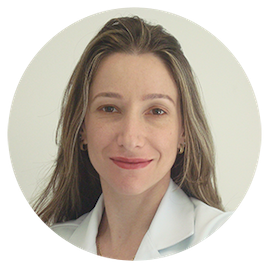
Moderators: Marianna Alperin, Cassandra Kisby, Katheen Connell, Robert Kelley, Zeliha Guler, Marsha Guess, Lyndsey Burnett
Speakers: Marianna Alperin, Gil Mor, Bryan Brown, Maria Florian-Rodriguez, David Orlicky, Caroline Gargett, Kathleen Connell, Francesca Boscolo Sesillo, Alec Szlachta-McGinn, Cassandra Kisby, Kun Pang, Harry Horsley, Melanie Meister, Oksana Shynlova, Maria Bortolini, Indira Mysorekar
The IUGA Basic Science Special Interest Group (SIG) and the AUGS Basic Science Committee developed a full-day program dedicated to the raw science and specifically focused on inflammation and pelvic floor dysfunction. Presenters included a global group of researchers, scientists, and physicians. Professor Gil Mor was our honored guest and keynote speaker. He talked about mechanisms of immune modulation in pelvic tissues. His passion about immunology was contagious, with his peculiar way of pleasantly addressing a harsh topic. For those unfamiliar with basic science and/or inflammation per se, examples were given of how inflammation processes drive the pathophysiological mechanisms underlying PFD: inflammation is behind childbirth trauma with and without a proper healing process; inflammation underlies the physiological aging process in a cascade of events called “inflammasome”; systemic inflammation and oxidative stress are behind systemic conditions such as obesity and diabetes, potential risk factors for PFD; the status of ovarian hormones during a woman’s lifespan affects the PF immune system in an orchestrated modulation influencing pelvic floor tissues; and finally, pathological inflammatory reaction determines the host-response to synthetic materials used in reconstructive pelvic surgery. Congratulations to the organizers for putting together a program that tied basic sciences with clinical application, from the bench to the bedside, giving the audience a perspective of current knowledge and the gaps that need to be filled and addressed towards the understanding of the pathophysiology of pelvic floor disorders and the development of future technologies to manage them.
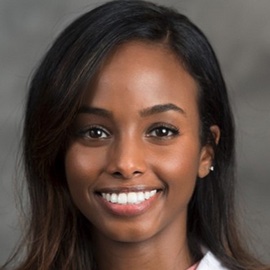
Moderators: Dudley Robinson, Nazema Siddiqui
Speakers: Deepanjana Das, Michele O’Shea, Abigail Davenport
The Best Abstract Presented by a Physician in Training prize was awarded to Patient Satisfaction with Telehealth Visits for New Patient Appointments for Pelvic Floor Disorders: A Randomized Trial of Telehealth Versus Standard In-Person Office Visits, a non-inferiority RCT. Dr. Deepanjana Das et al. randomized 58 participants to either initial telehealth or in-person visits. Mean PSQ-18 scores, the primary outcome, were high overall but higher in the in-person group, reflecting greater patient satisfaction. However, non-inferiority of telehealth to in-person visits could not be established. More in-person participants felt they had adequate time with their provider, and that their visit was timely and efficient. The telehealth group expressed uncertainty regarding the format and perceived benefits. No differences were noted in phone calls, and surgical vs non-surgical treatments.
Development and Initial Validation of a Pictorial Scale to Assess Symptomatic Prolapse and Urinary Incontinence won the Best Quality of Life Abstract. In a collaboration between Duke University (United States) and Maseno University (Kenya), Dr. Michelle O’Shea presented the development and validation of a pictorial scale assessing common PFDs in Kenya. First, international, and local providers reviewed images for POP, SUI, UUI, and symptom severity developed by a local artist. Then, cognitive pre-testing with outpatients at a tertiary referral hospital in Kisumu, Kenya, guided image modification. Finally, investigators validated illustrations against clinical history and physical exam at three hospitals. Among 100 patients with a median age of 35 years, 32% had UUI, 25% had SUI, and 9% had symptomatic POP. Sensitivities and specificities for SUI and UUI were 80% and 97%, and 81% and 99%, respectively. The better performing of two POP illustrations demonstrated 67% sensitivity and 99% specificity.
Lastly, the Best Clinical Surgical Abstract Prize was awarded to Feasibility Pilot of Transurethral Catheter Self-discontinuation (FLOTUS). Dr. Amy Davenport presented a pilot study assessing feasibility of catheter self-discontinuation (CSD) after outpatient urogynecologic surgery. After failing a backfill voiding trial (VT) on POD 0 and subsequent discharge with an indwelling catheter, participants cut and removed the catheter proximal to the balloon deflation channel on POD 1. Patients underwent traditional VT in the office if they voided less than 150 mL within 6 hours after CSD. All 48 participants successfully performed CSD without adverse events. 81% passed the POD 1 VT at home, and only 2% of these patients later required catheterization. Participants failing POD 1 VT were older, and more likely to have 2 or more office visits. No difference in emergency room visits were seen between participants with POD 1 VT successes and failures.

Moderator: Jan Deprest
Speakers: Giulio Aniello Santoro, Ka Lai Shek, Luyun Chen, Aparna Hegde
Jan Deprest (Belgium) led a panel of experts as they presented their experiences, practices, and latest evidence on the role of imaging studies in management of patients with pelvic floor disorders. G.A Santoro (Italy) gave an insightful talk on role of ultrasound imaging in diagnosis and treatment of anorectal disorders. He highlighted that ultrasound imaging not only helps in determining the anatomy of the anorectal region but also helps in corelating it with the clinical findings and differentiating between complex multicompartment damages. This further helps in optimizing individual treatments and outcomes. Ka Li Shek (Australia) spoke on role of translabial ultrasound in management of prolapse. She emphasized that ultrasound imaging is a valuable tool complementing clinical examination and helps in reducing false negative findings, excluding pathologies which may mimic prolapse, and facilitates risk stratification of recurrence of prolapse in patients. Following this, Luyun Chen (USA) described how clinical examination fails to identify the structural defects in patients of prolapse leading to high failure rates after surgical repair. She introduced a new approach combining imaging and biomechanical modeling using 3D stress MRIs to assess specific structural defects and plan repairs accordingly to reduce overall surgical failure rates. A very interesting talk on the role of ultrasound imaging as an aid in management of mesh complications was given by Aparna Hegde (India). She highlighted ultrasound markers predictive of good outcomes following sling surgery and emphasized that ultrasound can help in accurately diagnosing other mesh complications and help in planning future treatment strategies.
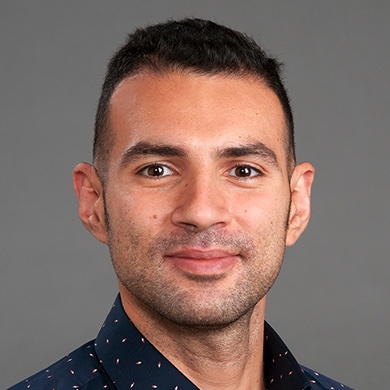
Moderator: Ranee Thakar
Speakers: Hedwig Neels, Seth Cohen, Josephine Tapper, Gabriel Ganyaglo
The plenary, How to Develop Patient and Public Involvement in Urogynecology Services, started with introduction of the panel: clinicians, a physiotherapist and – a refreshing addition – a patient.
First, physiotherapist Hedwig Neels shared what she feels the layperson should know about the pelvic floor. Two important terms that come easily to clinicians in the field when it comes to treatment of pelvic floor disorders are ‘personalized’ and ‘multi-disciplinary,’ but what does this mean to the layperson? Counseling regarding pelvic floor strengthening and knowledge of risk factors associated with pelvic floor disorders and patient empowerment are all different aspects that are necessary for engagement of our patients in urogynecology. Education is empowerment and self-advocacy. Regarding communication and education, she highlighted two recommended attributes: multi-modal and concise.
Following this talk, Seth Cohen, a urogynecologist, discussed the role of social media in patient education and communication. The most important question he asked is, “Can we afford not to engage in social media?” Dr. Cohen discussed the multiple avenues that social media affords for engagement which include patient engagement as well as professional engagement. Through social media, one can engage with professional organizations such as IUGA and AUGS. This may open opportunities for research collaboration and more comprehensive educational exchange.
The plenary shifted to the highlight of the talk, the patient perspective. Josephine Tapper, a patient herself, led this session. Her first tip: listening to the patient is not enough; engaging the patient is what is truly needed. This engagement would mean a positive change for three entities: patient, clinician and political. Through her involvement in multiple projects, she has learned of some challenges to patient engagement. One that stood out most to her is the underrepresentation of ethnic minorities, disabled populations, and patients with lower socioeconomic status. Another challenge is the inherent ageism in the current digital age with many senior populations having less coherency of digital media and thus, less access to resources. This talk segued nicely into the next part of the session presented by Dr. Gabriel Ganyaglo from Ghana.
Dr. Ganyaglo took us to low-resource communities to discuss challenges faced and how his team has overcome some of these challenges. His team started by providing scheduled outreach to multiple locations to provide treatment of pelvic floor conditions. Over time, these communities, despite a major language barrier, developed a strong trust in the clinicians providing outreach and started reaching out themselves to ask about the next planned visit. This emphasizes how patient engagement over time led to potentially more access through self-advocacy. He finished the talk by thanking IUGA for helping them with outreach as well as with record keeping.
The ensuing discussion spanned multiple topics including regional obstacles to social media, tips regarding safe and effective patient communication, and challenges to shared decision making in the clinical setting.
Overall, this plenary shed light on obstacles faced today in healthcare, specifically, the disconnect that may happen between patients and clinicians and offered multiple perspectives on building this bridge to further advance patient advocacy and optimize the healthcare patients receive.

Moderator: Maria Bortolini
Speakers: H. Henry Lai, John DeLancey, Shaynti Mukherjee
The panel on personalized medicine moderated by Maria Bortolini (Brazil) gave a peek into a world where a “one size fits all” therapeutic approach is fast becoming obsolete. The first session, on personalizing approach to overactive bladder (OAB) by H. Henry Lai (USA), mainly focused on stratifying OAB patients into clinically meaningful phenotypes based on existing comorbid conditions and providing individualized treatment plans to patients based on their phenotype rather than the traditional symptom-based approach. This was followed by a very interesting session by John Delancey (USA) on personalizing management of stress urinary incontinence (SUI). He highlighted the fact that most surgical procedures for correcting SUI focus only on restoring urethral support and are associated with high failure rates ranging from 20-40%. Therefore, there is a need to phenotype patients with SUI and shift the focus from urethral support to urethral sphincteric mechanism and maximum urethral closure pressure (MUCP). He emphasized the need to devise novel diagnostic and treatment options for improving urethral function and thereby reducing failure rates. Shayanti Mukherjee (Australia), in her innovative session, explained how, in the future, 3D printing of a resorbable mesh and bioprinting patients’ stem cells on it can help make better and personalized biomaterial for prolapse treatment without the need for multiple surgeries. She also described how, in the future, the repair capacity of stem cells may be used in women with childbirth-related injury to prevent pelvic organ prolapse.
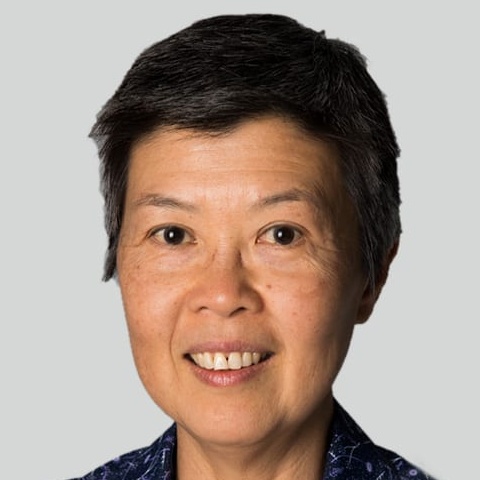
Speakers: Judith Goh, Surandhra Ramphal
The vaginal approach for complex fistula cases was presented. Videos of the repair are available on the FIUGA website under the Lecture tab.
Repair of Recurrent Vesico-vaginal Fistula (VVF)
Initial examination of a recurrent VVF may reveal a small fistula or a series of small fistulas over the previous scar line. Dissection and mobilization of the fistula off the vagina will often demonstrate only thin scar tissue in-between the small fistulas or along the previous scar. Using this thin, relatively avascular tissue for subsequent fistula repair will have a higher risk of further breakdown. A wider mobilization is often required to obtain ‘healthy’ tissue for the repair and allow a tension free closure. A dye test is performed following repair of the fistula to ensure a water-tight closure and exclude other fistula(s).
Repair of Urethra-vaginal Fistula
When there is significant loss of the posterior urethra, lateral mobilization of tissue is required to reconstruct the urethra to a normal or near normal caliber. Tissue/muscle lateral to the urethra, e.g., ischiocavernosus muscle, may be utilized to reconstruct the urethra and a labial fat-flap may be required. A urethral catheter in place during the repair is used as a splint and to ensure an adequate urethral caliber.

Two exciting events were organized at the IUGA/AUGS Annual Meeting to raise awareness about pelvic floor disorders and raise funds for FIUGA and the AUGS PFD Research Foundation.
 First was the Cornhole Tournament which was held the 2nd evening of the meeting. For those not in the know, the game of cornhole involves contestants (in teams of two) taking turns pitching fabric bean bag bags filled with corn at a raised, angled board with a hole in its far end. The goal of the game is to score points by either landing the bag on the board (one point) or successfully throwing a bag through the hole (three points). The team that first achieves 21 points is the winner. International newbies who took part in the tournament were pleasantly surprised at how prepared and pumped up the American participants were. The contestants practiced their pitching fervently prior to the tournament and had come dressed in colorful t-shirts with jazzy team names emblazoned on the back, quite like serious sports people. 26 teams were registered and after a hotly contested series of games, the team named “It’s Called Bags” were declared the winners. In all the fun and games, over $15,000 was raised between the two foundations. Donors had the option of donating to either FIUGA, the PFD Research Foundation, or both. I hope this tournament becomes a fixture at future IUGA meetings.
First was the Cornhole Tournament which was held the 2nd evening of the meeting. For those not in the know, the game of cornhole involves contestants (in teams of two) taking turns pitching fabric bean bag bags filled with corn at a raised, angled board with a hole in its far end. The goal of the game is to score points by either landing the bag on the board (one point) or successfully throwing a bag through the hole (three points). The team that first achieves 21 points is the winner. International newbies who took part in the tournament were pleasantly surprised at how prepared and pumped up the American participants were. The contestants practiced their pitching fervently prior to the tournament and had come dressed in colorful t-shirts with jazzy team names emblazoned on the back, quite like serious sports people. 26 teams were registered and after a hotly contested series of games, the team named “It’s Called Bags” were declared the winners. In all the fun and games, over $15,000 was raised between the two foundations. Donors had the option of donating to either FIUGA, the PFD Research Foundation, or both. I hope this tournament becomes a fixture at future IUGA meetings.

FIUGA Vice Chair, Judith Goh, participating in the Cornhole Tournament
The second foundation event was the Foundations Fun Walk/Run held on the morning of Day 3. The venue was the Ann and Roy Butler Hike-and-Bike Trail at Lady Bird Lake, Austin. Over 66 people registered; attendees woke up early for the cause and came dressed in special Fun Walk/Run t-shirts to the starting point. The walk/run was through such pleasant precincts of Austin that it was very enjoyable. Medals were awarded to the fastest female, Cassandra Kisby, and the fastest male, Ian Fields. Registration fees for this event will support the activities of both FIUGA and the PFD Research Foundation.

Frederike Siemens and Lilian van Rumpt from The Netherlands participating in the Fun Walk/Run in Austin.
Congratulations to “It’s Called Bags,” Cassandra Kisby and Ian Fields!! And to our readers, we hope this inspires you to participate in these events in the next IUGA meeting and raise funds for our just cause.

Oscar Contreras Ortiz Award
The Oscar Contreras Ortiz award has been awarded since 2018 to honor the memory and legacy of Oscar Contreras Ortiz, the co-founder of the International Urogynecology Journal and IUGA President from 1996 – 1998. The award is given to the author(s) of the most impactful IUJ article of the previous two years. The article receiving this year’s award is A guide for urogynecologic patient care utilizing telemedicine during the COVID-19 pandemic: review of existing evidence. Congratulations to Cara Grimes, Ethan Balk, Catrina Crisp, Danielle Antosh, Miles Murphy, Gabriela Halder, Peter Jeppson, Emily Weber LeBrun, Sonali Raman, Shunaha Kim-Fine, Cheryl Iglesia, Alexis Dieter, Ladin Yurteri-Kaplan, Gaelen Adam, and Kate Meriwether for their timely article.
The FIUGA Honored Mentor Award
Bob Shull (USA) was honored by his mentees with the Honored Mentor Award this year. His mentees over the years showed their appreciation and gratitude for the unwavering support, guidance, and lasting impact Bob Shull has had on their careers. In the process, they also raised funds for FIUGA in his name. We thank all the mentees for their support to FIUGA and we thank Bob Shull, in all humility, for his yeomen service to the field.